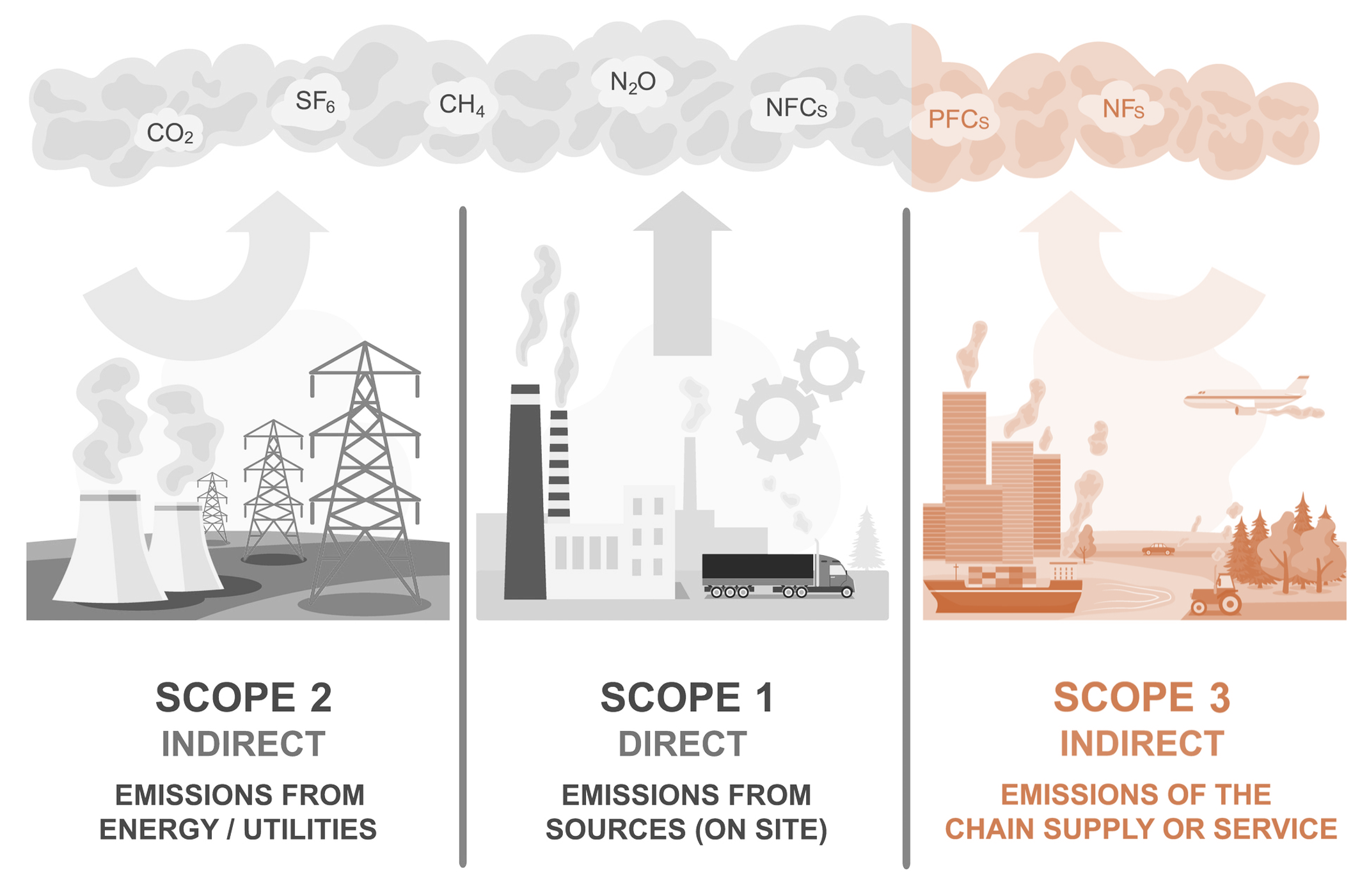
How to Use Your Procurement Spend to Calculate Your Scope 3 Emissions (for Australian & New Zealand Companies)
With growing ESG requirements in Australia, organizations are increasingly required to measure and report on their carbon emissions, especially focusing on Scope 3 (indirect) emissions, which include all activities within your supply chain.
Initially, this challenge can seem daunting—how do you gather detailed information about your suppliers and their activities to estimate the carbon dioxide they produce? For those using the Australian National Greenhouse Accounts Factors to estimate Scope 3 emissions, the process may not feel any simpler.
The good news is that there’s a relatively straightforward, approved, and widely used approach that can give you a good indication of your emissions without the exhaustive task of tracking down every activity within your supply chain: the Spend-Based Carbon Calculation method.
In this article, we’ll outline this method, its pros and cons, practical tips, and some alternatives.
What is the Spend-Based Carbon Calculation Method?
Put simply, this method involves taking your procurement spend and applying a specific factor based on the classification of each spend category. Here’s an example:
Example: $1,000,000 spent on electricity x 0.3 kg CO₂ per dollar = 300,000 kg of CO₂
In this example, for every million dollars your organization spends on electricity, 300,000 kg of CO₂ is produced. By applying these factors across each spend category, you can estimate your total CO₂ emissions. For additional context, typical carbon emission factors for categories like transportation, utilities, and waste management can vary widely, so it’s essential to use accurate, updated factors to achieve meaningful results.
For those interested in the technical aspects, the Spend-Based Carbon Calculation method leverages procurement spend data classified under the Australian and New Zealand Industry Classification (ANZSIC) standard. Then, using Environmentally Extended Input-Output (EEIO) models—a top-down approach for estimating emissions—you apply a factor to each classification.
Breaking Down the Process into Three Simple Steps
-
- Match Your Spend Classification to the Closest ANZSIC Code
ANZSIC, or the Australian and New Zealand Industry Classification, is a standard classification used by Australian and NZ governments, such as in the Australian Bureau of Statistics (ABS). If you use IBISWorld for market research, its reports also follow this classification.If you’ve already classified your procurement spend data to ANZSIC, you’re all set for this step. If not, you may need to translate your spend taxonomy into ANZSIC codes. AI tools can assist with this, or if you need additional support or a full list of ANZSIC codes, reach out to us at SpendSphere.ai.
Tip: It’s common to encounter challenges when translating custom spend categories into ANZSIC codes. If your data doesn’t neatly fit, try classifying at a broader level, or consider enlisting a third-party service like SpendSphere.ai for guidance.
- Match Your Spend Classification to the Closest ANZSIC Code
-
- Use an Approved Database of Conversion Factors
Next, obtain a database with emission factors for all ANZSIC codes. Using updated conversion factors is essential as emission profiles can evolve over time.Tip: Set a reminder to review and update your conversion factors periodically (e.g., annually) to ensure accuracy.
- Use an Approved Database of Conversion Factors
-
- Multiply Your Spend by the Relevant ANZSIC Carbon Emission Factor
With the necessary data in hand, use Excel (or similar software) to:-
- Generate a report of your spend by ANZSIC classification over the past 12 months
-
- Apply a lookup formula to find the corresponding emission factor.
-
- Multiply spend by the emission factor for each classification.
-
- Sum the total to get your organization’s CO₂ emissions based on procurement spend.
-
- Multiply Your Spend by the Relevant ANZSIC Carbon Emission Factor
This calculation provides a baseline estimate of your Scope 3 emissions.
Automating the Process
If you’re looking to streamline and automate this process, consider using tools like SpendSphere.ai, which integrates these steps directly into your procurement and sustainability systems.
Next Steps: Using Scope 3 Data for Actionable Insights
With a clear view of your Scope 3 emissions based on procurement spend, you can take several actions to manage and reduce your carbon footprint.
-
- Set Baselines and Targets:
Use this initial calculation to establish a baseline for Scope 3 emissions, allowing you to set realistic reduction targets aligned with your company’s sustainability goals.
- Set Baselines and Targets:
-
- Engage with Key Suppliers:
Identify high-emission suppliers and collaborate with them to reduce emissions. Encourage greener practices, such as renewable energy use or supply chain efficiencies, as part of a broader sustainability initiative.
- Engage with Key Suppliers:
-
- Track and Report Progress:
Incorporate this spend-based method into your regular reporting cycle to monitor reductions over time, highlight improvements, and transparently communicate your ESG progress to stakeholders.
- Track and Report Progress:
-
- Consider Alternative Methods for Greater Precision:
While the spend-based method is practical and accepted, some organizations may later transition to more detailed analyses, especially for critical suppliers or high-impact categories. For instance, direct emissions reporting or process-based carbon accounting might be more suitable for high-impact suppliers or strategic procurement categories.
- Consider Alternative Methods for Greater Precision:
-
- Automate and Streamline Reporting:
Automation tools like SpendSphere.ai simplify the process, integrating it directly into procurement and sustainability systems for consistent, accurate Scope 3 reporting.
- Automate and Streamline Reporting:
Final Thoughts
Achieving accurate and actionable Scope 3 emissions data doesn’t have to be complex. By leveraging the Spend-Based Carbon Calculation method, you can establish a solid foundation for tracking and managing your environmental impact. Whether you’re just beginning or refining your approach, SpendSphere.ai can support you at every step, helping you turn insights into actionable sustainability improvements.
Contact Us
Ready to take control of your Scope 3 emissions?
Contact us at SpendSphere.ai to get started. Together, we can build a more sustainable and transparent supply chain for your organization.